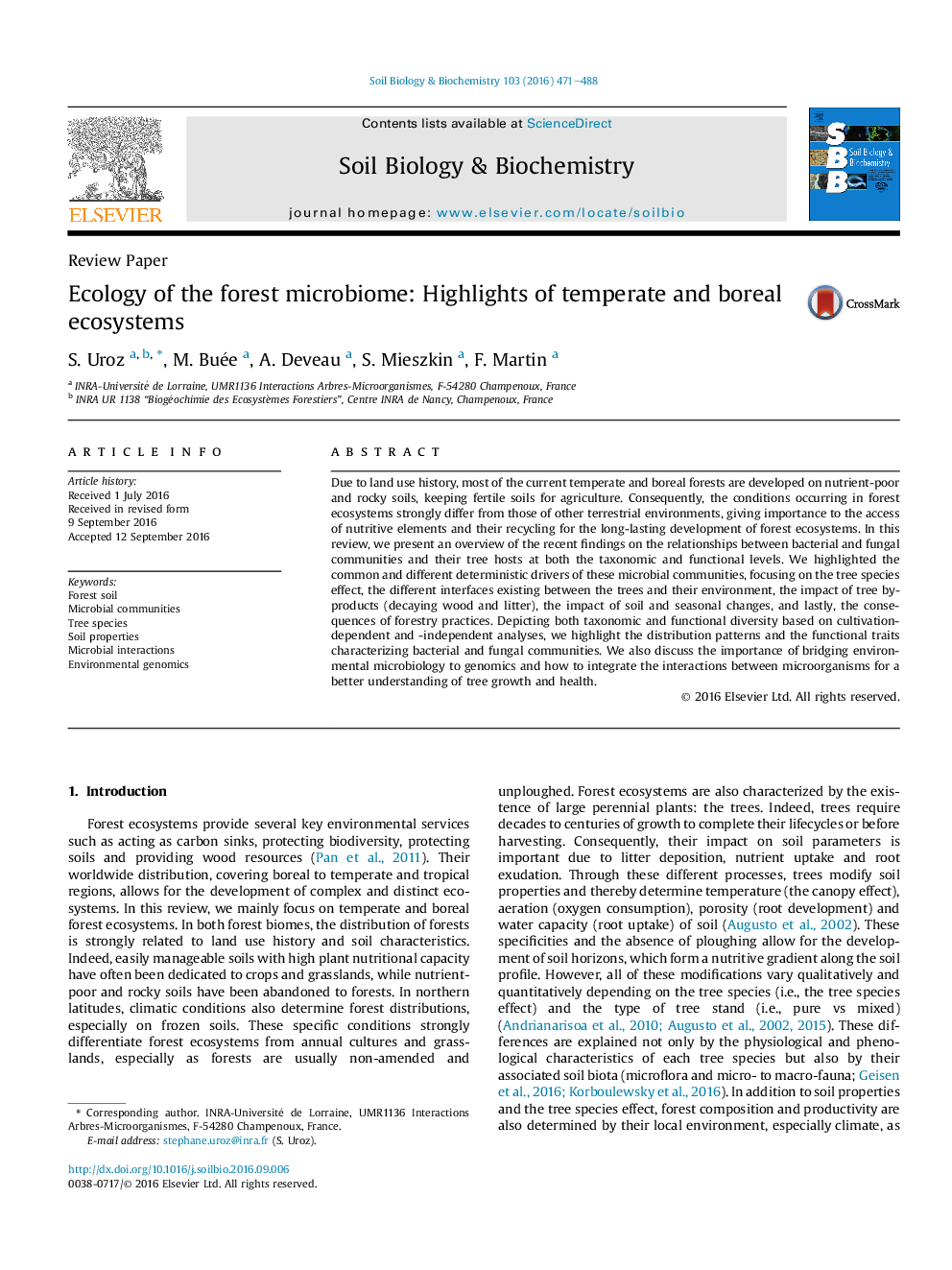| Article ID | Journal | Published Year | Pages | File Type |
|---|---|---|---|---|
| 8363352 | Soil Biology and Biochemistry | 2016 | 18 Pages |
Abstract
Due to land use history, most of the current temperate and boreal forests are developed on nutrient-poor and rocky soils, keeping fertile soils for agriculture. Consequently, the conditions occurring in forest ecosystems strongly differ from those of other terrestrial environments, giving importance to the access of nutritive elements and their recycling for the long-lasting development of forest ecosystems. In this review, we present an overview of the recent findings on the relationships between bacterial and fungal communities and their tree hosts at both the taxonomic and functional levels. We highlighted the common and different deterministic drivers of these microbial communities, focusing on the tree species effect, the different interfaces existing between the trees and their environment, the impact of tree by-products (decaying wood and litter), the impact of soil and seasonal changes, and lastly, the consequences of forestry practices. Depicting both taxonomic and functional diversity based on cultivation-dependent and -independent analyses, we highlight the distribution patterns and the functional traits characterizing bacterial and fungal communities. We also discuss the importance of bridging environmental microbiology to genomics and how to integrate the interactions between microorganisms for a better understanding of tree growth and health.
Keywords
Related Topics
Life Sciences
Agricultural and Biological Sciences
Soil Science
Authors
S. Uroz, M. Buée, A. Deveau, S. Mieszkin, F. Martin,
